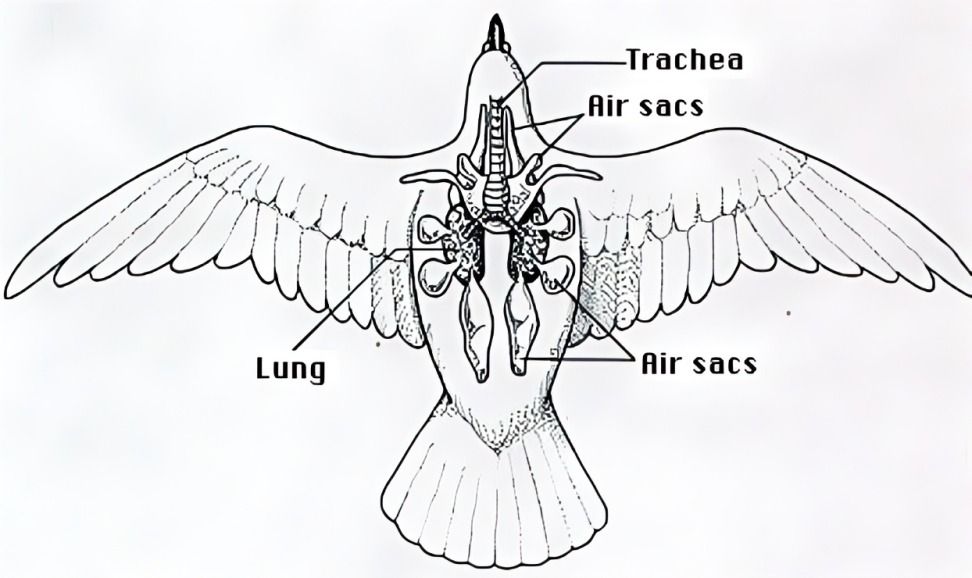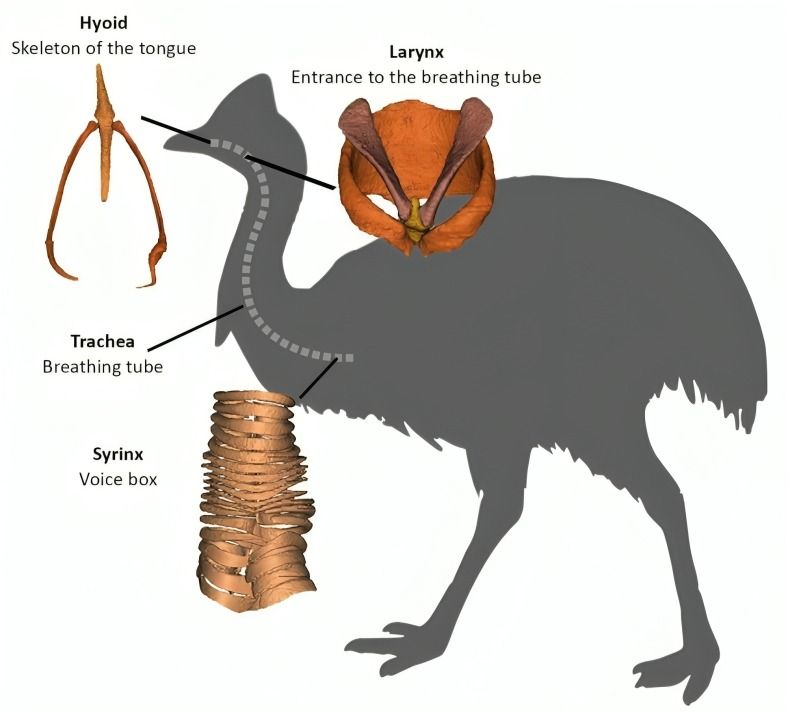
“
Birds have evolved a highly efficient respiratory system that supports their active lifestyles. The key to this efficiency is their unidirectional airflow and the use of air sacs, which provide a continuous supply of oxygen during both inhalation and exhalation. This article explores 20 key Facts About Bird Respiratory Systems, from their ability to maintain high oxygen levels in flight to their adaptations for surviving in low-oxygen environments. 1
1
”
Birds have a unique respiratory system where air flows in one direction through the lungs. This is unlike mammals, where air flows in and out the same pathway. This unidirectional flow ensures that birds have fresh air passing over their lung tissues. 1
Birds possess nine air sacs in addition to their lungs, which act as bellows to store and move air. These air sacs allow continuous airflow through the lungs, even when the bird exhales. This system provides a more efficient way to oxygenate the blood. 2
Unlike mammals, birds require two complete breath cycles to move a single volume of air through their respiratory system. On the first inhalation, air moves into the rear air sacs, then into the lungs on the first exhalation. 3

Bird lungs are far more efficient at extracting oxygen than mammalian lungs. While mammals extract about 25% of the oxygen they inhale, birds can extract up to 50%.This efficiency is crucial for meeting the high energy demands of flight.
Birds use a crosscurrent exchange system in their lungs, where air flows at a right angle to the flow of blood. This allows for more efficient gas exchange compared to mammals. The design ensures that oxygen absorption continues even at high altitudes.4
Birds lack a diaphragm, the muscle that mammals use for breathing. Instead, they rely on the movement of their chest muscles and keel to expand and contract the air sacs. This unique mechanism allows them to breathe while in flight. 5
Birds can breathe continuously even while flying, which is one of the reasons they can sustain long flights without rest. Their specialized respiratory system ensures a constant supply of oxygen, even during rapid wing movements.6
Birds like the bar-headed goose can fly at altitudes over 29,000 feet, where oxygen levels are extremely low. Their respiratory system, with its efficient oxygen extraction, allows them to survive and fly in such extreme environments. 7
In birds, the trachea divides into two primary bronchi, which further branch into smaller parabronchi. The parabronchi form a loop, allowing air to continuously flow in one direction. This structure is more rigid and efficient than the bronchioles in mammals. 8
Many bird species have proportionally larger tracheas compared to mammals. This not only aids in efficient respiration but also enhances their ability to produce complex vocalizations.9
Birds use their respiratory system to regulate body temperature by panting. This is especially important in birds that lack sweat glands. Panting allows them to evaporate water from their airways, cooling their bodies during hot weather. 10
Unlike mammals, birds do not retain "stale" air in their lungs after exhalation. The unidirectional airflow system ensures that fresh air is always present in the lungs, resulting in more efficient oxygen exchange. 11
In birds, air continues to move through the lungs even when they exhale. This continuous airflow ensures that gas exchange is uninterrupted. This system is key for birds' ability to sustain high metabolic rates required for long-distance flight. 12
Birds have a specialized voice box called the syrinx, located at the base of the trachea. Unlike mammals, which use the larynx for vocalization, the syrinx can produce a wide variety of complex sounds. 13
Birds have two sets of lungs that work in tandem with the air sacs. These lungs are relatively small and rigid but are highly vascularized for efficient gas exchange. The double lung system enhances the oxygen intake required for high-energy activities. 14
Birds like penguins and ducks, which both dive and fly, have a respiratory system that allows them to adapt to both environments. Their air sacs compress during dives, preventing lung collapse under pressure. 15
Birds have high metabolic rates, especially during flight, which demands large amounts of oxygen. Their respiratory system is built to meet this demand by maximizing oxygen absorption and eliminating carbon dioxide rapidly. 16

In some bird species, the trachea is elongated to increase the resonance of their calls. Species like cranes and swans have long, coiled tracheas, which allow them to produce louder and more resonant calls.
Birds can breathe more quickly than mammals when they need to. During flight or intense activity, their respiratory rate can increase to supply more oxygen to their muscles. 17
Even flightless birds like ostriches have highly efficient respiratory systems. Though they don't fly, they require large amounts of oxygen to support their large body sizes and fast running speeds. 18


